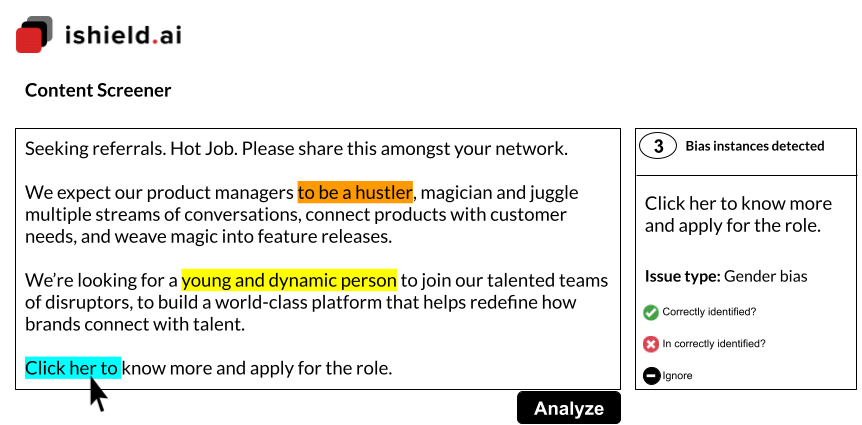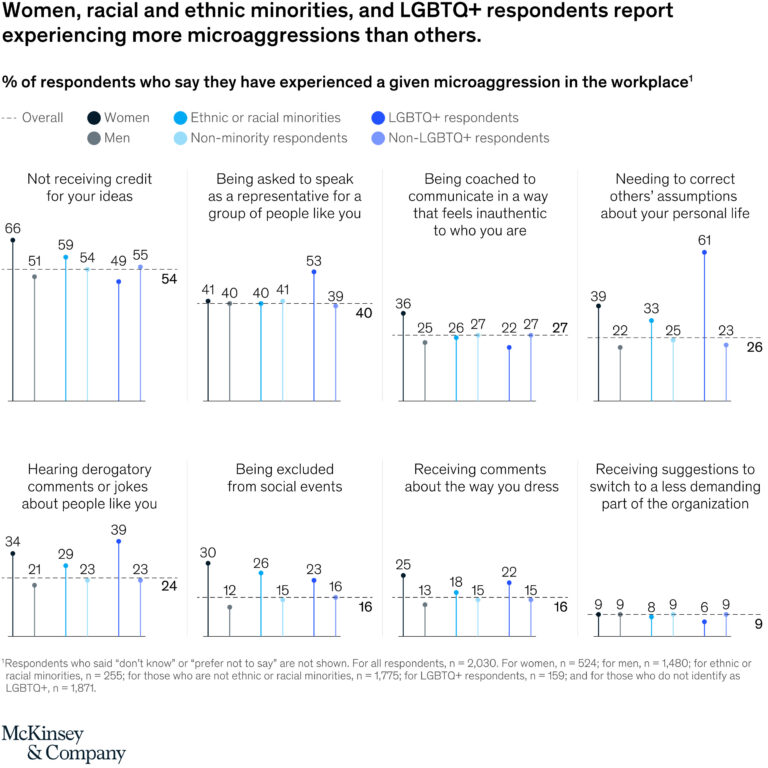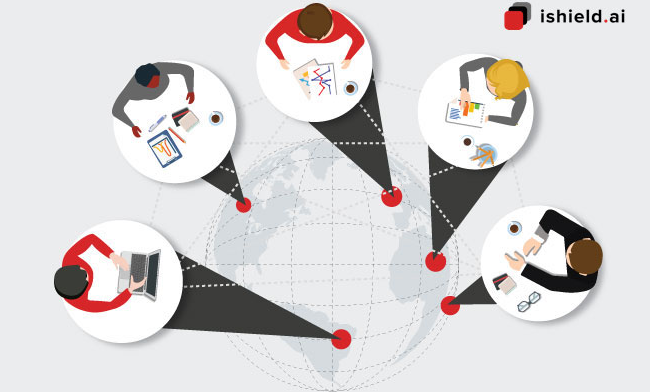Technology to foster inclusive messages between remote working teams
Working remotely has become commonplace globally. People are now connecting in entirely different ways, often experiencing greater connectivity than they did before the pandemic. Without targeted intervention to foster inclusive messaging, non inclusive dynamics among on-site teams have the potential to be amplified in a remote context.
Key to inclusion is communication within the organization as a whole, with the leaders in the organization and peers or team members. Research finds that respondents of all backgrounds encounter barriers to feeling included—and that women, respondents who are ethnic and racial minorities, and those who identify as LGBTQ+ encounter additional challenges.
According to a recent McKinsey report, incivility had already doubled in the last two decades before COVID-19, and some call it endemic. Now, some 95% of workers say they consistently experience incivility at work, but only 9% report it to management, according to workplace research by management professors Christine Pearson and Christine Porath, authors of the aptly titled book, The Cost of Bad Behavior: How Incivility Is Damaging Your Business and What to Do About It.
Challenges that companies need to overcome in workplace communication and collaboration includes:
Lack of context: It’s harder to grasp the context in which colleagues work and live, as well as the challenges they may face, especially when you don’t interact with them in person on a day to day basis.
Unconscious bias: judgments and behaviors toward others that we’re not aware of – is everywhere in our lives. In a remote working environment, this can become systemic errors in judgement leading to non-inclusive behaviour.
Microaggressions: workplace microaggressions, which are everyday slights rooted in bias. In every subgroup – by gender, gender identity, minority status, or sexual orientation – these indignities are more severe.
Developing context about your team members
Developing familiarity and context about an individual and how they operate is critical to the feeling of inclusion and belonging. While there are many aspects of an individual’s context, we tried to capture a few pointers in the diagram below to get started for consciously investing in developing context about the people we work with.

We found the following two articles very useful in driving a cultural change to foster inclusion and belonging amongst remote working teams:
Sustaining and strengthening inclusion in your new remote environment: https://www.mckinsey.com/business-functions/organization/our-insights/sustaining-and-strengthening-inclusion-in-our-new-remote-environment#
6 Ways to foster inclusion amongst remote workers: https://www.shrm.org/hr-today/news/hr-news/pages/6-ways-foster-inclusion-among-remote-workers.aspx
In addition to the recommendations above, technology can play a catalyst in developing context, these include simple solutions to the complex, such as:
Calendar configurations: Many companies already do this. Setting your calendar to reflect multiple time zones, developing a global holiday calendar that reflects all geographies your company operates in, and training people on calendar best practices (example: setting up an auto reply while on PTO).
Chatbots, news feeds etc: this requires a conscious effort both from the organization and the individual to get curated content to develop context about any events that can impact people in your remote teams.
Informal conversations: the onus to seek and tell about individual context is on everyone in the organization. Deliberately spend a few minutes with your team members to get to know them better and develop empathy, especially if you are a person in a powerful position in the company.
Unconscious bias
Biases are nothing new, but remote working environments can make us especially susceptible to them. We found the following articles particularly useful in recognizing and tackling unconscious bias while communicating and working with remote teams.
5 behavioural biases that trip up remote managers: https://hbr.org/2021/06/5-behavioral-biases-that-trip-up-remote-managers
Is remote working making women susceptible to unconscious bias: https://diversityq.com/is-remote-working-making-women-susceptible-to-unconscious-bias-1511793/
In addition to the recommendations provided in the articles above, technology such as krita.ai can help detect and tackle unconscious bias in workplace communications and collaboration.
Example: you are collaborating with your team to promote a job posting in your product team and you decided to ask your team members to post and share the articles on LinkedIN. Before you publish this post, you can use the Screener (https://krita.ai/screener) to check for unconscious bias before posting such an article. The screenshot below gives you a real-life example of how Screener detected and helped correct unconscious bias that no manual review or spell check tools detected.

Microaggressions
A survey by McKinsey found that 84 percent of all respondents have experienced workplace microaggressions, which are everyday slights rooted in bias. Women, minority, and LGBTQ+ respondents face additional challenges like slower career progression and workplace microaggressions. The data below published by McKinsey elaborates more on microaggressions.

These microaggressions seep into the way people communicate and can seriously hamper an organization’s inclusion goals. A few articles we find very useful to understand better about microaggressions and toxic work culture are below:
Understanding organizational barriers to a more inclusive workplace: https://www.mckinsey.com/business-functions/organization/our-insights/understanding-organizational-barriers-to-a-more-inclusive-workplace
Racial microaggressions in everyday life: https://gim.uw.edu/sites/gim.uw.edu/files/fdp/Microagressions%20File.pdf
When and how to respond to microaggressions: https://hbr.org/2020/07/when-and-how-to-respond-to-microaggressions
While these articles also offer some solutions to tackle microaggressions and workplace toxicity, we will explore how technology like Dost (https://isheild.ai/dost/) from krita.ai can help tackle these challenges.
How can Dost help in creating inclusive messages?
Dost is an AI-enabled BOT that plugs into enterprise messaging platforms like Slack, MS Teams, CS, Chatbots or any place where online conversations happen. Dost detects microaggression and toxicity in messages (text, audio, video, images, gif, meme, emoticons and attachments, etc) and flags them to the people sending them. People have an opportunity to consciously review their messages and take corrective actions (delete, edit, etc). In addition, Dost also directs the users to any training resources as per the organization’s enterprise communications guidelines. By enabling Dost on their enterprise messaging platforms, companies can now create more inclusive and toxic-free workplace conversations.

You can know more about how Dost works through the video here:
https://www.youtube.com/watch?v=bbMwsOtxylE
About krita.ai
At krita.ai, our purpose is to make online content safer, inclusive and human. We develop AI SaaS products that empower enterprises to take action and accelerate inclusive representation in their content. To know more about how krita.ai can help your organization, start here.

